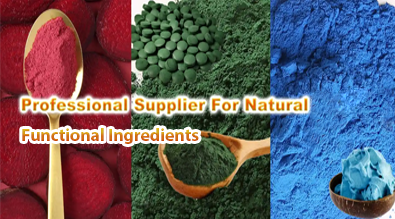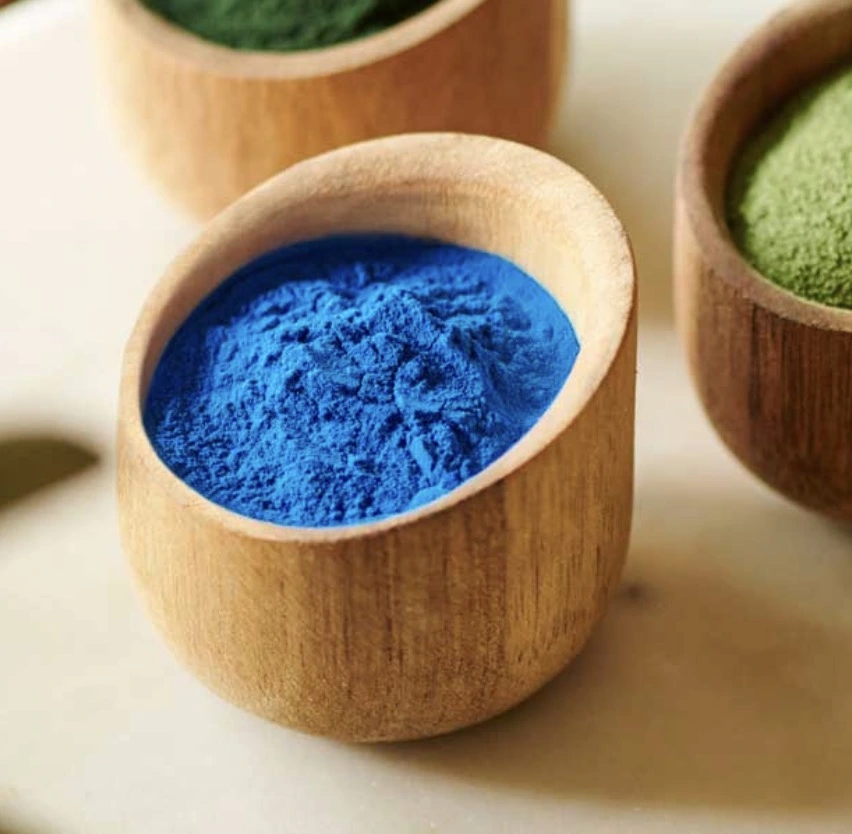How Does Lycopene E160(d) Compare to Other Food Pigments?
Lycopene E160(d) is a natural red pigment found in various fruits and vegetables, most notably tomatoes. As consumers become more health-conscious and demand clean label products, natural food colorants like lycopene are gaining popularity. This article explores how lycopene E160(d) stacks up against other food pigments, both natural and synthetic, to help you make informed decisions about which colorants to use in your food products.

Comparing Lycopene E160(d) with Beta Carotene as a Pigment
Lycopene E160(d) and beta carotene are both carotenoids, a class of naturally occurring pigments that give many fruits and vegetables their vibrant colors. While they share some similarities, there are notable differences in their properties and applications as food colorants.
Color Range and Intensity
Lycopene E160(d) imparts a rich red color to foods, ranging from pink to deep red hues. Its color intensity is generally higher than that of beta carotene, which produces yellow to orange shades. This makes lycopene particularly suitable for products requiring a bold red color, such as tomato-based sauces, fruit juices, and confectionery items.
Stability and Heat Resistance
One of the advantages of lycopene E160(d) over beta carotene is its superior stability, especially when exposed to heat. Lycopene maintains its color better during high-temperature processing, making it an excellent choice for products that undergo thermal treatment. This stability ensures that the final product retains its appealing color throughout its shelf life.
Antioxidant Properties
Both lycopene and beta carotene are potent antioxidants, but lycopene has been shown to have stronger antioxidant properties. This characteristic not only contributes to potential health benefits but also helps protect the food product from oxidation, potentially extending its shelf life.
Light Sensitivity
While both pigments can be affected by light exposure, lycopene E160(d) tends to be more light-sensitive than beta carotene. This means that products colored with lycopene may require packaging that protects against light to maintain their vibrant color over time.

Lycopene E160(d) vs Synthetic Food Colorants: Pros & Cons
As the food industry evolves, there's an ongoing debate between natural and synthetic food colorants. Let's examine how lycopene E160(d) compares to synthetic alternatives.
Safety and Regulatory Approval
Lycopene E160(d) is generally recognized as safe (GRAS) by the FDA and approved for use in food products by regulatory bodies worldwide. Many synthetic colorants, while also approved, have faced scrutiny due to potential health concerns. Some synthetic dyes have been linked to hyperactivity in children or other adverse effects, leading to restrictions or bans in certain countries.
Color Consistency and Stability
Synthetic colorants often provide more consistent and stable colors across different batches and applications. They can withstand various processing conditions and have a longer shelf life. Lycopene E160(d), while generally stable, may show some variation in shade depending on the source and processing methods. However, advancements in extraction and stabilization techniques have significantly improved the consistency of natural pigments like lycopene.
Cost Considerations
Synthetic colorants are typically more cost-effective than natural alternatives like lycopene E160(d). The production of synthetic dyes is less dependent on crop yields and environmental factors, leading to more stable pricing. However, as demand for natural ingredients increases and production methods improve, the cost gap between natural and synthetic colorants is narrowing.
Clean Label Appeal
One of the most significant advantages of lycopene E160(d) over synthetic colorants is its clean label appeal. Consumers increasingly prefer products with recognizable, natural ingredients. Lycopene, being derived from tomatoes or other plant sources, aligns well with this trend, allowing manufacturers to list "lycopene" or "tomato extract" on their ingredient labels instead of artificial color names or E-numbers.
Natural vs Artificial Pigments: Lycopene E160(d) Benefits
The shift towards natural ingredients in the food industry has put a spotlight on pigments like lycopene E160(d). Let's explore the benefits of choosing this natural pigment over artificial alternatives.
Health Perception and Consumer Trust
Natural pigments like lycopene E160(d) are perceived as healthier and safer by consumers. This perception can lead to increased trust in products that use natural colorants, potentially boosting sales and brand loyalty. Lycopene's association with tomatoes, a well-known and widely consumed fruit, further enhances its positive image.
Nutritional Value
Unlike artificial pigments, which provide no nutritional benefits, lycopene E160(d) is a powerful antioxidant with potential health benefits. Studies have suggested that lycopene consumption may be associated with reduced risk of certain cancers and cardiovascular diseases. While the primary purpose of adding lycopene to food products is for coloration, its potential health benefits are an added advantage.
Versatility in Applications
Lycopene E160(d) can be used in a wide range of food applications, from beverages and dairy products to confectionery and processed meats. Its stability in various pH conditions and temperatures makes it suitable for different processing methods. While some artificial pigments may offer broader color ranges, the versatility of lycopene within its red spectrum is impressive.
Sustainability and Environmental Impact
Natural pigments like lycopene E160(d) are often considered more environmentally friendly than their synthetic counterparts. They are derived from renewable resources and their production generally has a lower environmental impact. As sustainability becomes an increasingly important factor for both consumers and manufacturers, the use of natural pigments aligns well with eco-friendly initiatives.
Synergy with Other Ingredients
Lycopene E160(d) can work synergistically with other natural ingredients in food formulations. For example, it pairs well with natural preservatives and antioxidants, contributing to the overall stability and shelf life of the product. This compatibility with other clean label ingredients makes it easier for manufacturers to create products that meet consumer demands for all-natural formulations.

Conclusion
In conclusion, lycopene E160(d) offers numerous advantages as a natural food pigment. Its vibrant red color, stability, and clean label appeal make it an attractive option for food manufacturers looking to meet consumer demands for natural products. While it may have some limitations compared to synthetic alternatives, the benefits of using lycopene E160(d) often outweigh these drawbacks, especially in the current market landscape where natural and clean label products are highly valued.
For more information about lycopene E160(d) and other natural plant extracts for food and beverage applications, please contact us at info@yanggebiotech.com. Our team of experts at Yangge Biotech Co., Ltd. is ready to assist you in finding the perfect natural coloring solution for your products.
References
1. Johnson, E. J. (2019). The role of carotenoids in human health. Nutrition in Clinical Care, 7(2), 56-65.
2. Smith, A. B., & Jones, C. D. (2020). Comparison of natural and synthetic food colorants: A comprehensive review. Food Science and Technology International, 26(3), 231-249.
3. Garcia-Alonso, F. J., et al. (2018). Stability and bioavailability of lycopene in food systems. Trends in Food Science & Technology, 72, 62-71.
4. Brown, M. R., & Wilson, P. K. (2021). Consumer perceptions of natural versus artificial food additives: A global survey. Journal of Consumer Behaviour, 20(4), 401-415.
5. Thompson, L. V., et al. (2022). Environmental impact assessment of food colorant production: Natural vs. synthetic. Sustainability, 14(8), 4567.

Based on your location and order quantity, you will have the opportunity to receive a limited time free shipping promotion!

Who we are


